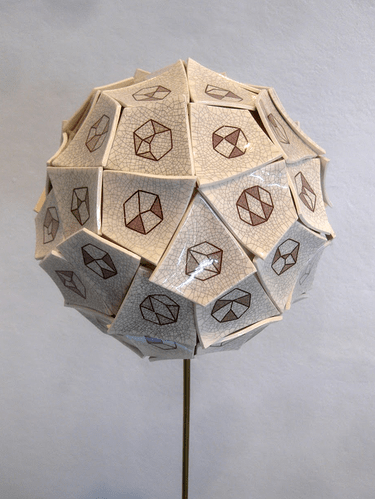Does anyone know if it’s safe to cut paper that’s been printed on with laserjet toner? I know that there’s some concern about breathing it in when it’s in powder form. Once it’s fused it’s safe, but I wonder if cutting through it with a laser would put it back in a hazardous state.
The part that’s lasered will likely turn to soot, which is in general not good to breathe whatever it used to be. But it doesn’t turn back into the fine powder it started as. Don’t know if that’s useful. I know a bunch of people with filters who laser-cut toner-printed materials.
I hope not because I do it all the time…lol
Traditional black toner is black nylon, colored laser toner can be other things. The challenge is that some toners might not be, and the dyes can have things of course. Breathing toner dust is a totally separate problem unrelated to lasering.
Interesting, nylon. No wonder it melts and fuses so readily.
Some black toners have at least 35% iron oxide in them. They sometimes are known as MICR cartridges. They are made so that printed barcodes can be read magnetically in the banking industry. They are also very useful in ceramics, where images printed on paper, but not passed through the fusing stage of the printer, can easily be transferred onto greenware and fired to give rust colored imagery.
http://santafecreativetourism.org/wp-content/uploads/2014/02/picture-for-transfer-class.jpg
I never knew about that, very cool!
That’s beautiful.
I should point out that is not my work…I just found an example on Google Images. It belongs to http://santafecreativetourism.org/project/image-transfer-on-clay-with-magpie-pottery/.
But I have done this sort of thing before. Here is one of my pieces:
That is really beautiful work!
About how big is it?
Incredible.
Thanks @jkopel and @vettha! It’s about three feet tall, made from porcelain slip, iron oxide laser toner, and a clear glaze with just the right crazing (that took 64 recipe variations to get just right). The final step was to rub India ink into the glaze cracks. More of my work (here).
I have a fascination with eight-bar mechanisms, and those shapes represent the 60 different ways to arrange eight links to form planar single-degree-of-freedom mechanisms with revolute (pin) joints. So I figured I’d present them on a shape with 60 sides–the deltoidal hexecontahedron.
Yes, geeky, I know. But there’s more than just academic fascination going on here. Just one of those 60 shapes, for example, gives rise to the basic mechanism behind Theo Jansen’s “Strandbeest” wind-powered walking machines (more). I’ve been studying the other 59 kinematic chains, and believe there are many more practical (and/or mesmerizing) applications.
And that’s what I plan to do with my 'Forge!
I saw those years ago, and I could never remember what they were called lol, thanks. That is definitely one of the projects I want to study with my GF too

